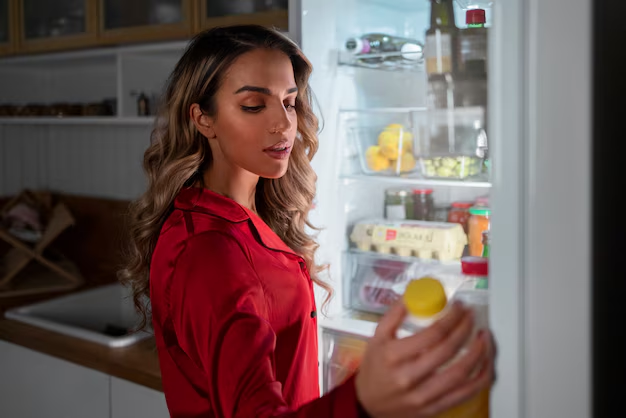Best Practices for Storing Fruits and Vegetables in Your Refrigerator
Keeping your fruits and vegetables fresh longer is a common challenge many face in the kitchen. With the right techniques, you can reduce waste, enjoy fresher produce, and keep your refrigerator organized. Let's explore how to effectively store fruits and vegetables in your refrigerator to maximize their freshness and flavor.
Why Proper Storage Matters
Fresh produce not only tastes better, but it also nourishes us with essential vitamins and nutrients. Improper storage can lead to premature spoilage, meaning a loss of both money and valuable food resources. Additionally, correctly storing these items can help maintain their texture, taste, and nutritional content.
Understanding Your Refrigerator's Zones
Temperature and Humidity
Most refrigerators have different zones of temperature and humidity, which are optimal for various types of produce. Understanding these zones can significantly enhance the longevity of your fruits and vegetables.
- Crisper Drawers: Often designed for high humidity, these drawers are perfect for leafy greens and vegetables.
- Upper Shelves: These tend to be slightly warmer, making them suitable for fruits that prefer less cold.
- Lower Shelves: Usually the coldest part, ideal for storing items that need to be kept very cold.
General Storage Tips for All Produce
1. Keep Your Refrigerator Clean Maintain cleanliness by routinely wiping down shelves and drawers to prevent bacteria growth.
2. Do Not Overcrowd Proper air circulation is essential for keeping produce fresh. Avoid overcrowding your refrigerator to allow cool air to circulate.
3. Monitor Ethylene Gas Some fruits emit ethylene gas, which can speed up ripening in nearby produce. Store ethylene-sensitive vegetables away from high emitters like apples or bananas.
How to Store Vegetables
Leafy Greens
Optimal storage: Keep in the crisper drawer inside a plastic bag with small holes to control humidity. Adding a paper towel can help absorb excess moisture.
Root Vegetables
Optimal storage: Store in a cool, dark place in the fridge, away from fruits. Keeping root vegetables in plastic bags or mesh produce bags helps maintain desired moisture levels.
Cruciferous Vegetables
Optimal storage: Keep in the fridge after patting them dry. Ensure they are stored in a perforated plastic bag or a container with a breathable lid to prevent moisture buildup.
Storing Fruits
Berries
Optimal storage: Wash just before use to prevent mold growth. Store in their original container or a breathable, sealed container lined with a paper towel.
Apples
Optimal storage: Prefer cooler parts of the refrigerator, like the lower shelves. Keep them away from strong-smelling foods and ethylene-sensitive vegetables.
Citrus Fruits
Optimal storage: These fruits do best in the draft-free crisper drawer, either loose or in a mesh bag.
Additional Tips for Specific Produce
Avocados
Ripen at room temperature and then move to the refrigerator to maintain ripeness. They can be stored in a plastic bag to keep them from over-ripening, which helps manage gas exposure.
Mushrooms
Keep in their original packaging or in a paper bag to allow them to breathe, preventing sliminess.
Tomatoes
Though often stored at room temperature, refrigerating ripe tomatoes can slow down the ripening process. Let them come to room temperature before serving for better flavor.
The Art of Rotating Stock in Your Refrigerator
A simple yet effective technique is "first in, first out." It means placing newly purchased produce behind the older stock to ensure you use items before they spoil.
Summary Table of Key Storage Tips
| Produce Type | Ideal Storage Technique |
|---|---|
| Leafy Greens | Crisper drawer in a perforated bag with a paper towel 🌿 |
| Root Vegetables | Cool area, stored in bags to maintain moisture levels 🥕 |
| Cruciferous Vegetables | Pat dry and store in a perforated container or bag 🥦 |
| Berries | Store in breathable container, wash before use 🍓 |
| Apples | Lower shelves, away from ethylene-sensitive items 🍏 |
| Citrus Fruits | Crisper drawer, either loose or in mesh bags 🍊 |
| Avocados | Ripen room temperature, refrigerate when ripe 🥑 |
| Mushrooms | Original packaging or paper bag for breathability 🍄 |
| Tomatoes | Room temperature for unripe, refrigerate when ripe, serve at room temp 🍅 |
Empowering Your Kitchen with Good Practices
Using these storage techniques transforms your refrigerator into a powerhouse of preservation. Better managed freshness not only means tastier meals but also a smarter way to use food resources. Implement these practical tips, and watch your fruits and veggies sustain their vitality and nourish you when you need them most.
Your well-tended fridge doesn't just benefit your taste buds; it supports a more mindful and sustainable kitchen environment. As you adopt these practices, you contribute to less food waste and more delicious meals, creating a win-win scenario in your culinary adventures. 🥦🍎🍊
